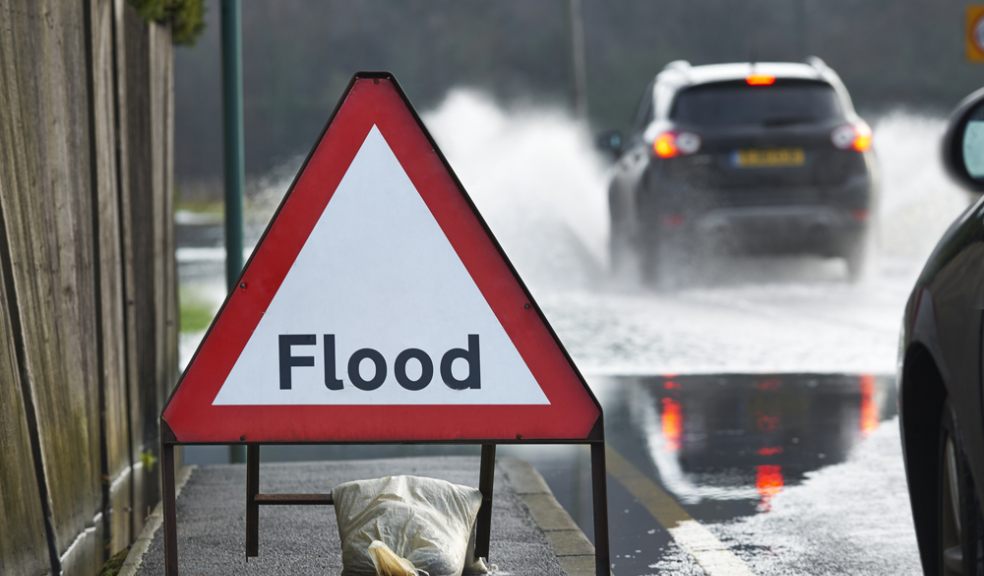
Report highlights 'significant and increasing' risks from extreme weather
University of Exeter researchers have played a crucial role in creating a comprehensive new report indicating that the global risk from extreme weather is set to intensify.
The critical report, published by the Royal Society, indicates that exposure of human populations to extreme weather is set to increase as global climate and population size, location and age continue to change.
A Working Group consisting of 15 world-leading academics, including Exeter professors Peter Cox and Katrina Brown, were brought together to produce the influential report, published on Thursday, November 27.
It presents new maps showing the combined impact of climate and demographic changes across the world on the exposure of people to extreme weather. The maps highlight those areas where there is the greatest increased risk of populations being vulnerable towards to end of the century.
The report focuses on the risks to people from floods, droughts and heatwaves. These are some of the most frequent and damaging extreme events that currently occur and their impacts will change with the changing climate. It shows:
- Increasing numbers of people will live in areas that are exposed to extreme weather events exacerbate the risks from floods and droughts in many regions, but especially East, West and Central Africa, India and South-East Asia.
- The number of over-65 year olds is increasing; This is one of the groups most vulnerable to heatwaves. With current numbers, the number of heatwave exposure events this group experiences each year could increase from 0.1 billion today to almost 1 billion in 2100. If we do nothing to mitigate climate change, and population growth and distribution proceeds as expected, this number could rise to 4 billion.
- Changes in temperature and humidity could result in significant reductions in ability to work outdoors across much of Africa, Asia, and parts of North, South and Central America. This could impact on rural communities and food production.
The report calls for action at all levels of government – international, national and local – to make society more resilient to extreme weather events. In 2015 important international agreements will be reached on disaster risk reduction, sustainable development and climate change. These agreements will be much more effective in addressing extreme weather and its impacts if they are linked with, and reinforce, each other.
Professor Peter Cox, from Exeter’s Mathematics department said: “We are much more vulnerable to climate change than is normally assumed. For example, it is normal to think about global warming in terms of the global mean temperature increase, which is dominated by the large ocean area that warms much more slowly than the land. Unfortunately people live on the land, so they experience much more than the global average warming.
“This report has highlighted the need to make people and infrastructure much more resilient to climate change. The recommendations include more consideration of ecosystem-based approaches to protection, such as maintaining coastal wetlands or forests, and more explicit consideration of climate risks in company finances.”
Professor Katrina Brown from the Environment and Sustainability Institute at the University of Exeter’s Penryn Campus in Cornwall added: Building resilience to climate change and extreme weather must start now. We need to anticipate and plan for events, rather than wait until after them. Our analysis shows that a combination of conventional engineering and ecosystem-based approaches, which harness and enhance the buffering capacity of natural landscapes, are likely to be most effective. Governments should work alongside communities and other groups to find the best ways to keep people safe now and in the future.
Between 1980 and 2004 the total cost of extreme-weather related events came to US$1.4 trillion (of which only 1Ž4 was insured). Populations in countries with a low Human Development Index make up only 11% of those exposed to hazards but account for 53% of disaster mortality.
The report compares various practical options for the most effective and affordable defence against the impacts of flooding, drought and heatwaves.
The report concludes that engineered options, such as dams, sea walls and wells are often the most effective at reducing the impact of a particular hazard, but that they are also expensive, and if they fail they fail cataclysmically. If used in combination with ecosystem-based approaches such as floodplain or mangrove re-establishment and planting vegetation they can be more effective and affordable as well as delivering wider benefts on an on-going basis – not just when the hazard strikes. These ecosystem or ‘natural’ approaches are often more affordable and can have multiple additional benefits to society.
The working group therefore recommends that ecosystem-based approaches are increasingly used in combination with more traditional approaches, although more effort is needed to ensure they are systematically monitored and evaluated. The report uses the ‘Slowing the Flow’ initiative in Pickering, UK as an example of where this is being done.
Professor Georgina Mace, Chair of the working group for the report said: “We are not resilient to the extremes of weather that we experience now and many people are already extremely vulnerable. If we continue on our current trajectory the problem is likely to get much worse as our climate and population change. By acting now, we can reduce the serious risks to our children and grandchildren.
“National governments have a responsibility to do everything in their ability to protect their people from the devastation caused by extreme weather events.”
The report also calls for changes to global financial accounting and regulation to ensure that extreme weather risk is made explicit. At present, these risks are not systematically factored into investors’ valuations or assessed by creditors.
Business surveys, economic forecasts and country briefings that guide investment decisions and credit ratings are typically based on the availability of skilled labour, access to export markets, political and economic stability, and financial incentives – but there is little or no consideration of actual or potential exposure to disaster risks.
Specifically, the Society suggests that companies report the following:
- 1 in 100 (1%) risk per year – a stress test for a company’s solvency that evaluates the maximum probable losses expected for events that occur, on average, once in a hundred years or have a 10% chance of occurring every decade
- 1 in 20 (5%) risk per year – a stress test for a company’s annual earnings
- Annual Average Loss – a standardised metric for a company’s exposure to extreme events
The full report and interactive versions of global maps showing the change in exposure to floods, droughts and heatwaves between 2010 and 2090 will be available on the website: royalsociety.org/resilience

















